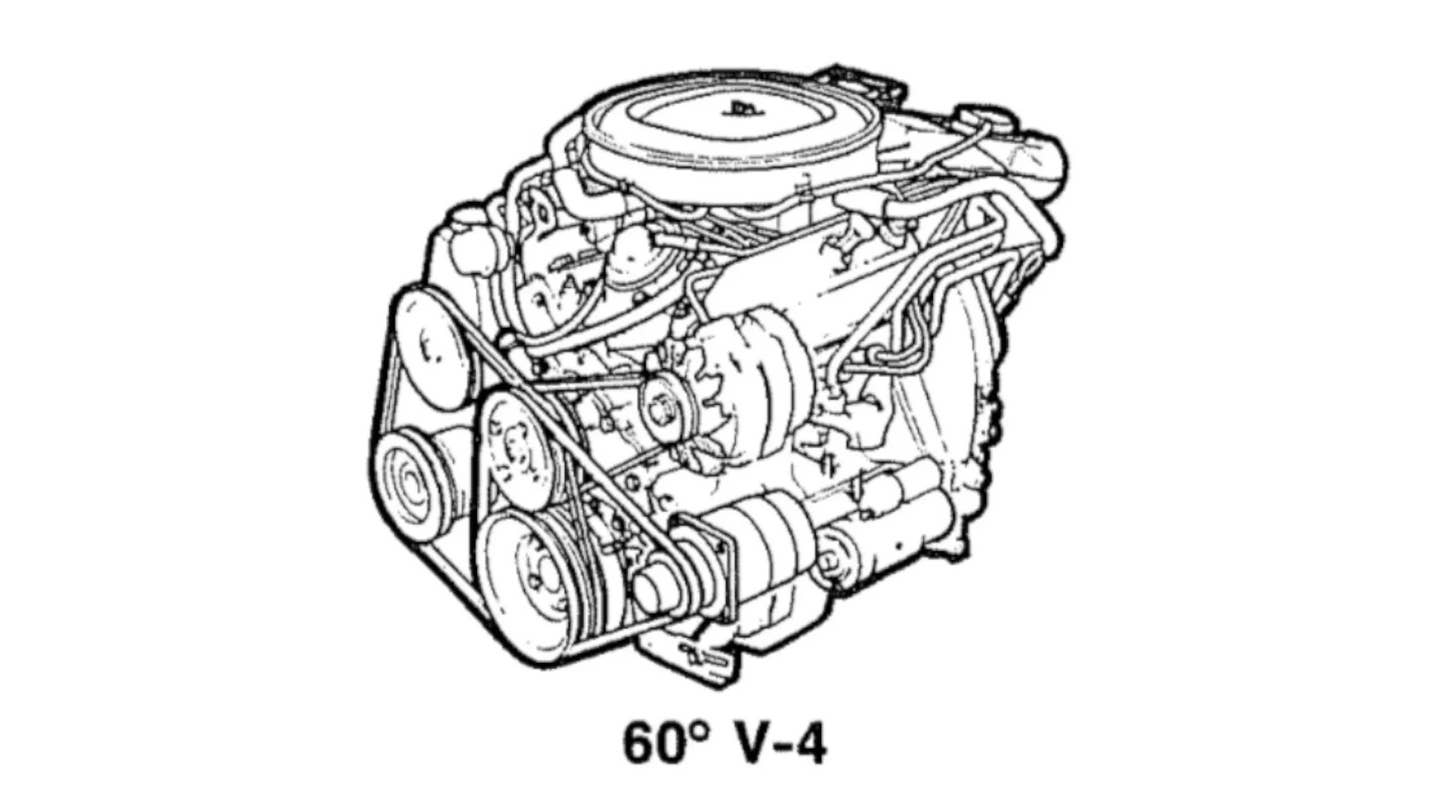GM Developed a V4 in the ’80s for Economy Cars. It Went Nowhere
GM considered the V4 as the beating heart of the J platform cars, but it just wasn’t meant to be.

The V4 engine layout is a curious one. Despite making a few appearances in oddball European cars like the Saab Sonett, it never really caught on. As it turns out, GM experimented with the idea in the 1980s, though it was destined never to reach the market.
In the 1970s, deep in the Malaise Era, GM started cooking up its recipe for the J platform. It was looking to build a compact car befitting an era where emissions and fuel economy were paramount concerns. It needed an engine to suit, and it began to explore a V4, as explained by Rare Classic Cars & Automotive History on YouTube. It was an engine that could have powered everything from the Chevrolet Cavalier to the Pontiac 2000 and Oldsmobile Firenza.

GM actually designed, built, and evaluated three engines for the project—a pushrod inline-four, an overhead-cam inline-four, and a 60-degree V4 design. The J car's critical dimensions, including factors like the transaxle, dash, and front-end position, were already fixed. The engines were evaluated as to which would best suit the J car design.
The V4 itself was cribbed from the existing Chevrolet 60-degree 2.8-liter V6, with cylinders one and two chopped off. The idea was that it could be built on the same machining line, using the same pistons and valvetrain parts as the V6. The V4 was also the shortest engine of the three, but it was also the widest. This necessitated mounting the engine accessories on the front, which spoiled its length advantage.
It's interesting to note that the J car needed an engine that would help GM meet the new Corporate Average Fuel Economy (CAFE) standards, introduced in 1978. It aimed for the J car fleet to be capable of 29 mpg, according to contemporary documents published by the automaker. Meanwhile, performance targets were hilariously low. It aimed for a zero-to-60 mph time of 16 seconds for automatic models and 14 seconds for those with manual transmissions.
In the end, GM landed on the pushrod inline-four for the J-Car, eschewing the V4 primarily due to packaging difficulties. It also offered a tuning advantage for this exact reason, by virtue of there being more space to construct a suitable inlet manifold under the hood. The pushrod design also beat out the V4 and overhead-cam engine for cost reasons, while the latter also suffered in terms of the maximum achievable displacement.
GM's decision was typical, historically speaking. V4s are significantly shorter than inline-fours, but are inherently wider, especially in 90-degree designs. This can pose packaging issues in many conventional automotive cases. There are also cost concerns, with V4s requiring two exhaust manifolds, two cylinder heads, and two valvetrains. This increases cost and complexity over simpler inline-four designs.
It's interesting to think about a world where the Buick Skyhawk, Cadillac Cimarron, and Chevrolet Cavalier could have all been rocking V4 power under the hood. In the end, GM went with the sensible business choice instead, and the world is a little bit less interesting for it.
Got a tip? Let the author know: lewin@thedrive.com
